From the Hip
Sears, Roebuck & Company Colt SAA .45 COWBOY SPECIAL
column By: Brian Pearce | June, 21
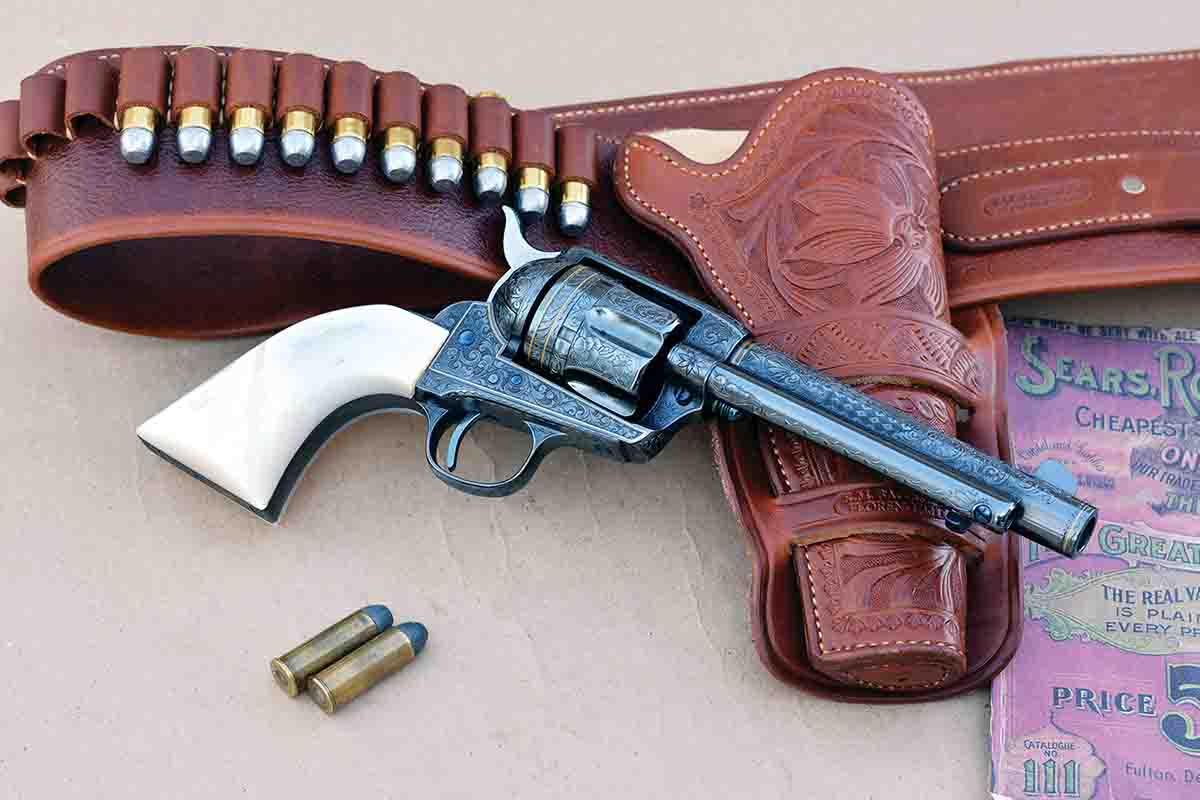
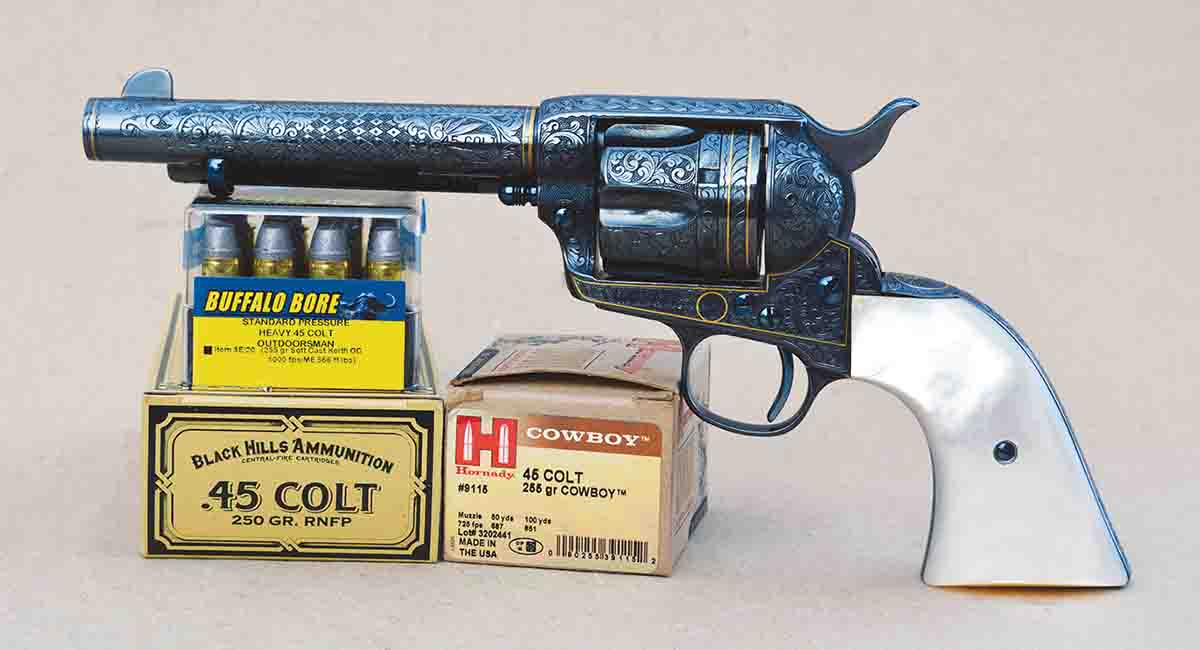
In addition to having a unique and very difficult to execute engraving pattern, it was one of only three known SAA revolvers produced during the pre-World War II era (1873-1941) with gold inlay. The final finish was Colt’s beautiful carbona blue, which is comparatively light colored but illuminates with a most pleasing color. The bluing process was accomplished by polishing with a combination of walrus hide and whale oil, then placed in a coal-fired oven containing charcoal and whale oil, then baked for several hours, with periodic scrubbing with oakum and ash. All of the above was repeated up to six times, or until the craftsman was satisfied with the finish.
From approximately 1890 through 1910, Colt produced its finest quality SAAs, which were generally considered its pinnacle of quality. The Sears gun was produced during the heart of this golden era and was its finest effort, which resulted in a stunning masterpiece. Virtually all Colt authorities consider gun 172485 as top-of-the-line.
In 2009, the Sears gun sold at auction for $747,500.00, which was the highest price paid for a Colt SAA to that date, but authorities predict that it would bring in excess of $1.5 million today!
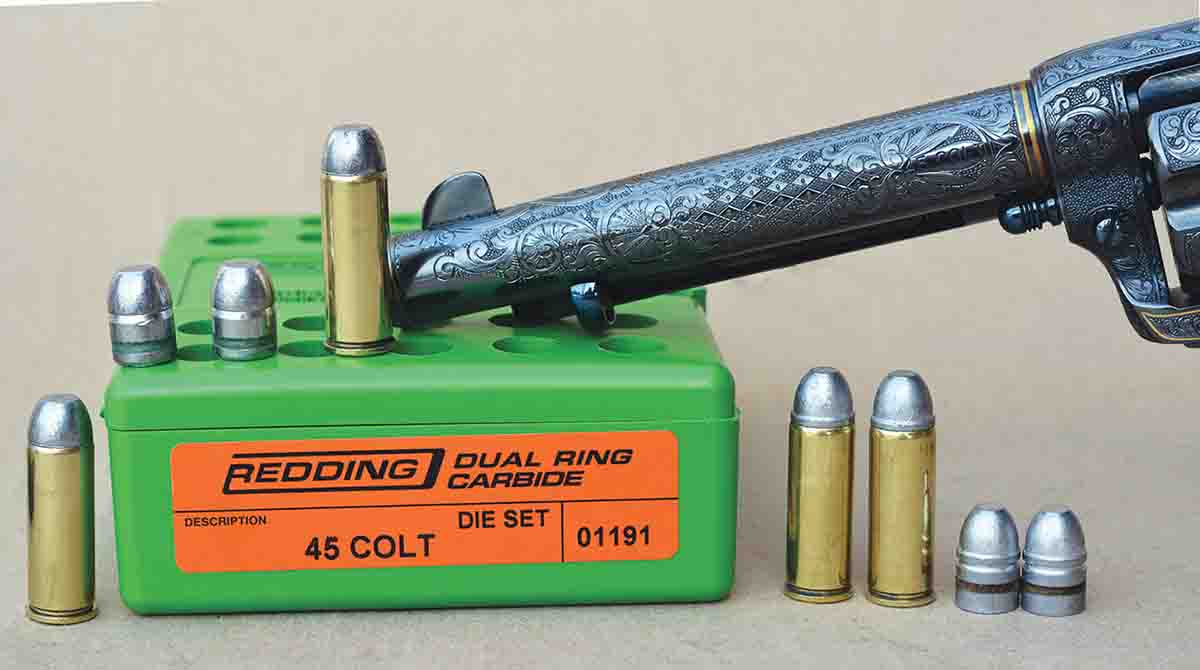
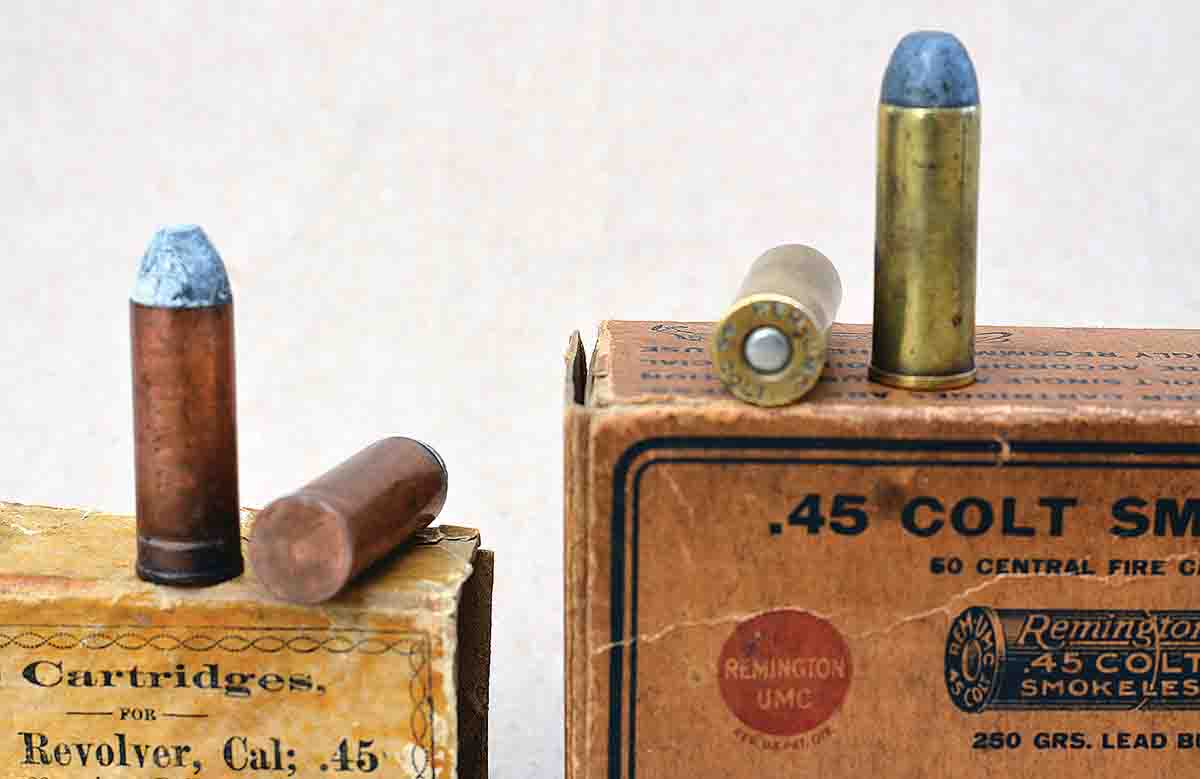
Younger generations may not understand the significance of Sears, but it was America’s giant retailer that largely appealed to rural residents. It sold everything from buggies to bicycles and saddles to sewing machines, but was always known for quality. Its “largest retailer” status lasted through the 1980s but failed to keep pace with changing times. Growing up on remote cattle ranches, the Sears catalog was treasured. I could place my meager earnings – cash and coin – into an envelope and mail it to Sears for a new hunting knife, binocular, etc., and the items always arrived.
The Colt SAA is the most collected handgun in the world; however, its virtues and practicality as a working gun are as valuable today as they were nearly 150 years ago, as well as the .45 Colt. With modern steels and springs, it will easily handle potent loads (not to be confused with high pressure) and is highly reliable. During the days when it served soldiers and cowboys, its rugged design proved it could handle abuse, neglect, black powder, exposure to the elements and keep on working. I have been using SAAs since my early teens and have taken big game including whitetail and mule deer, antelope, black bear, elk, wolves, varmints, snakes, etc.
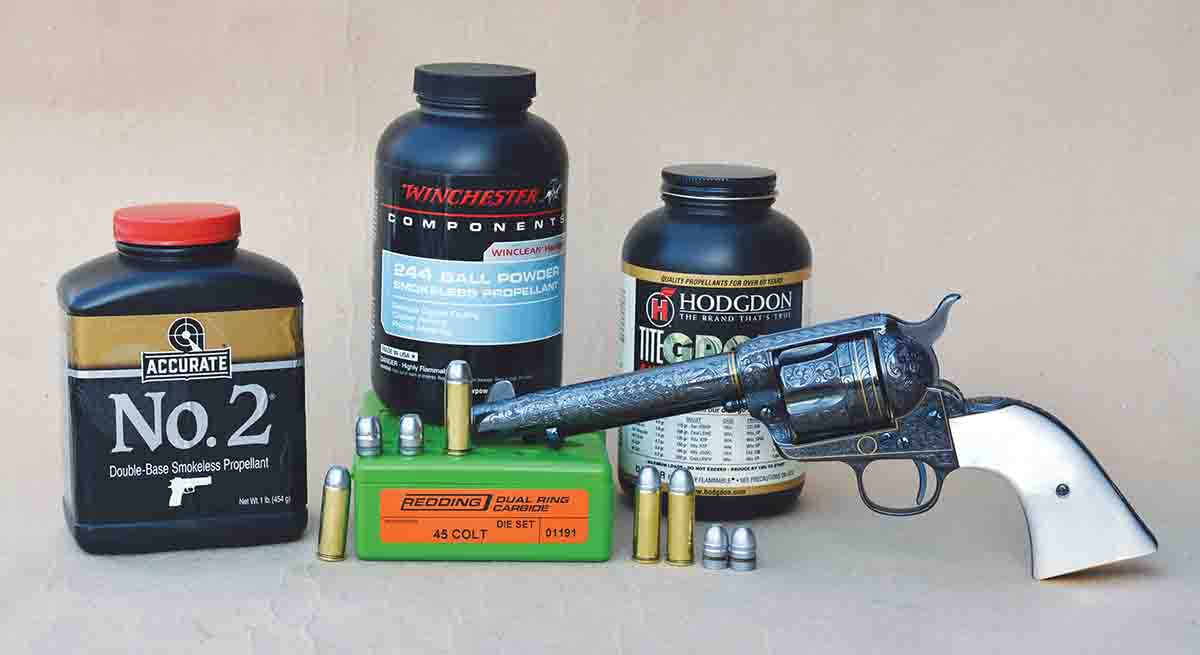
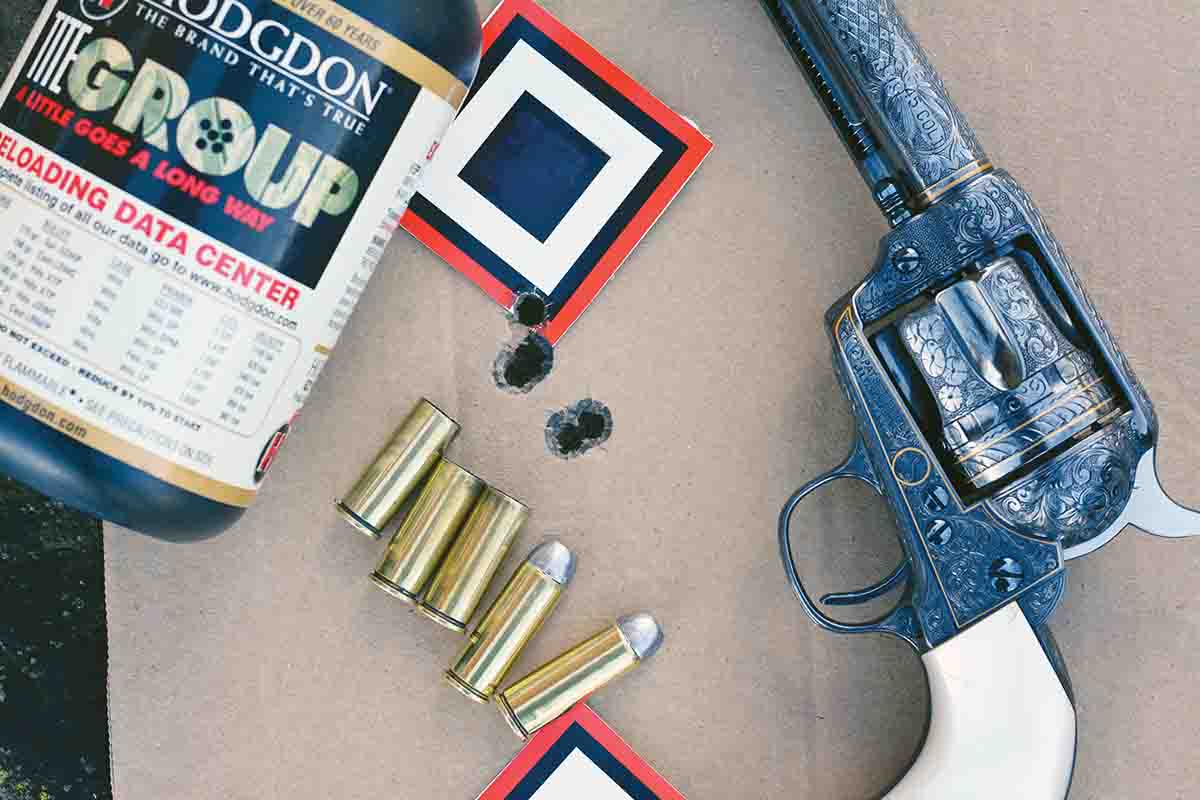
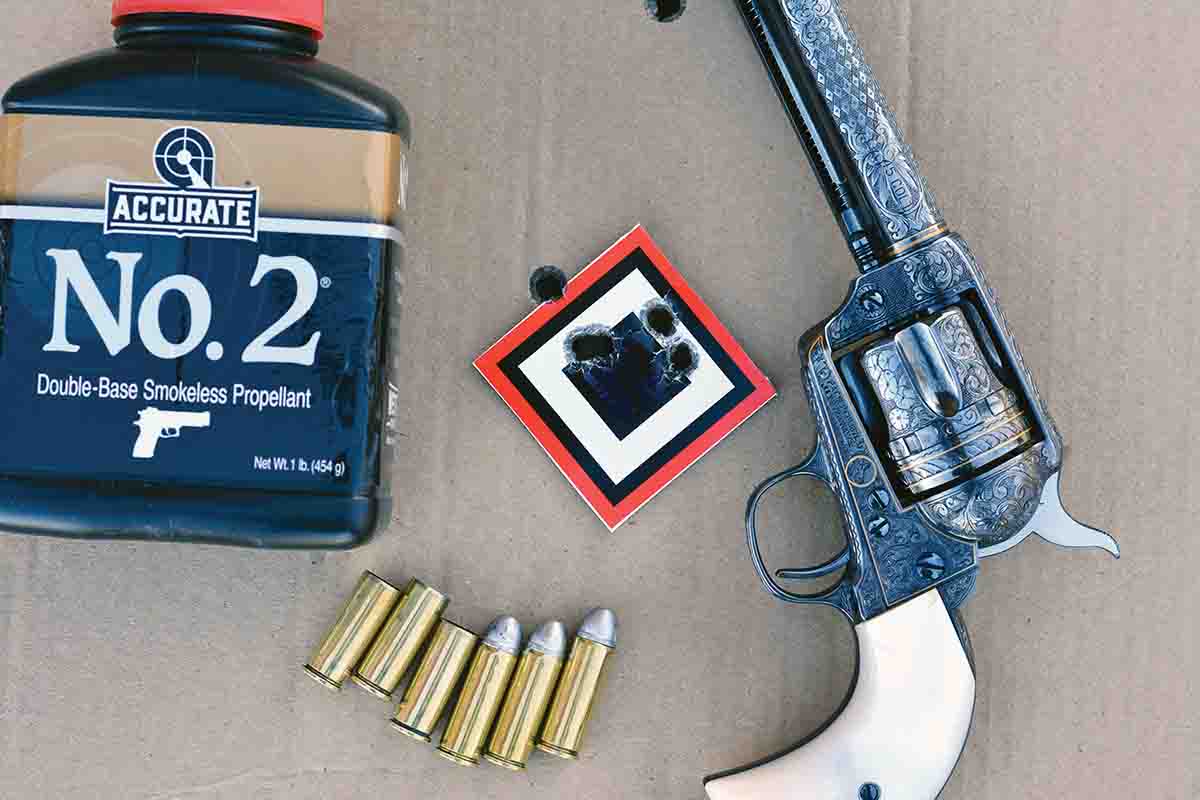
After finding a suitable gun manufactured in 1897, I pulled the original barrel and cylinder and forwarded the frame, backstrap and trigger guard, along with a modern high-tensile 4140 chrome-moly steel .45 Colt cylinder with .452-inch throats, large beveled flutes, etc., to Nutmeg Sports (nutmegsports.com). Nutmeg was founded by the late Jim Aliamo after he worked as Colt’s Custom Shop Manager for many years, but the business is now owned and operated by his daughter Emily and her husband Tyler. They specialize in Colt restorations, engraving, special finishes, stock work, etc.
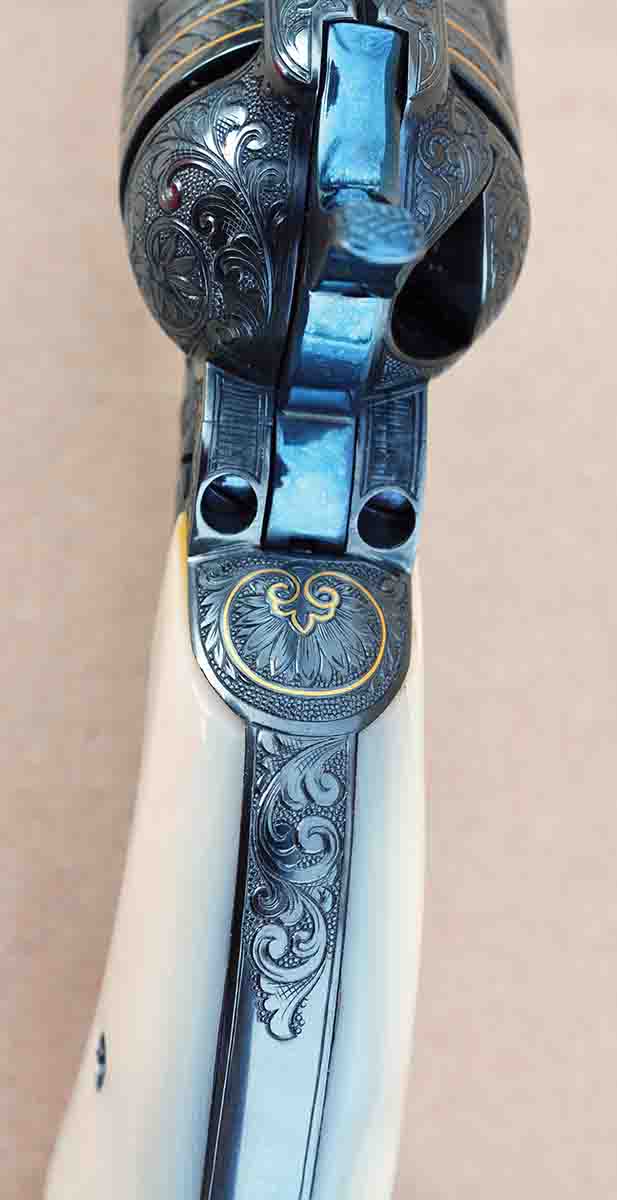
A new match grade 5½-inch barrel was properly roll marked and installed with a tight, .002-inch barrel/cylinder gap and 11-degree forcing cone. A new set of deeply-figured mother-of-pearl stocks were installed. Unfortunately, genuine pearl is very difficult to carve and no credible artists were willing to tackle recreating the Goddess of Liberty (aka Columbia).
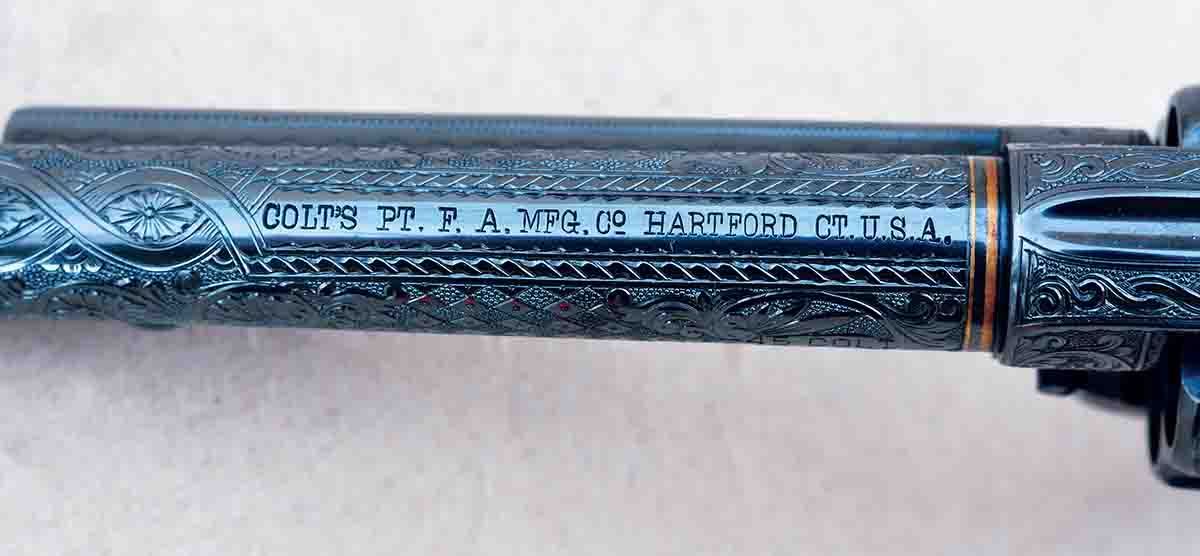
The gun was now a “steel canvas,” ready for the skilled hand of a master engraver. While Nutmeg uses many different engravers with varying levels of skill and pricing, I selected Dennis Kies, who has engraved several guns for me previously. Not only is his skill remarkable and his cuts virtually perfect, but he has the ability to duplicate engraving patterns with exactness. Kies began his career with Colt in 1968 and, with talent that flows naturally, he quickly achieved “Master Engraver” status. Although he currently engraves independently, he continues to perform work on Colt’s finest Custom Shop guns. He also served as USFA’s Master Engraver for 20 years and teaches the art and engraving. His work is world renowned and held in the highest esteem by his colleagues and customers.
.jpg)
When Kies completed the engraving, the Colt was returned to Nutmeg for final finish, including Carbona bluing and fire-blued screws and accents, then forwarded to me. It was expected to be essentially flawless, but it was even better than that! For example, the engraving served to further enhance the luster of the stunning carbona blue finish. Words cannot express the beautifully coordinated colors of the mother-of-pearl grips, fire blue accents, gold inlay and light colored carbona finish. Incidentally, the engraving was examined by another well-known Colt engraver under 20x magnification. He stated, “Practically all engraved guns have some small flaw or flaws, but I have poured over every detail of this gun and it is literally flawless.” I have scrutinized the engraving quality with the aid of 20x magnification and compared it with high resolution photos of the original Sears gun, and Kies’ engraving is definitely superior to the original.
In addition to the generous gold inlay, engraving is D+ with florid Victorian scroll (foliate arabesque) patterns generously applied to the frame, backstrap, trigger guard, recoil shield, loading gate and ejector housing. The top strap is highlighted with dual braided rope patterns. The cylinder features four distinct patterns between the flutes, including scroll, flowers and rocks along with two gold bands and scroll towards the back of the cylinder. The distinguished barrel is a blend of scroll and three gold bands. However, it is the perfectly executed diamond and dot checkerboard pattern that is distinguishing and difficult to engrave. For example, the barrel is tapered, and for the pattern to be perfect, the checkerboard must taper equally with each section, which can be verified by a micrometer. Finally, all engraving is accented with fine punch dot and shading.
The revolver was so stunning that after its return, it just rested on my desk for a week or so, just to be studied and admired. Only those with an appreciation for art will understand, but regardless on which side the gun was resting, the eye was never drawn to any single aspect or area. Rather, the eye tends to scour the gun from butt to muzzle while absorbing and admiring every detail. It is indeed a remarkable masterpiece. Clearly artist Cuno Helfricht knew exactly what he was doing when he created the layout pattern.
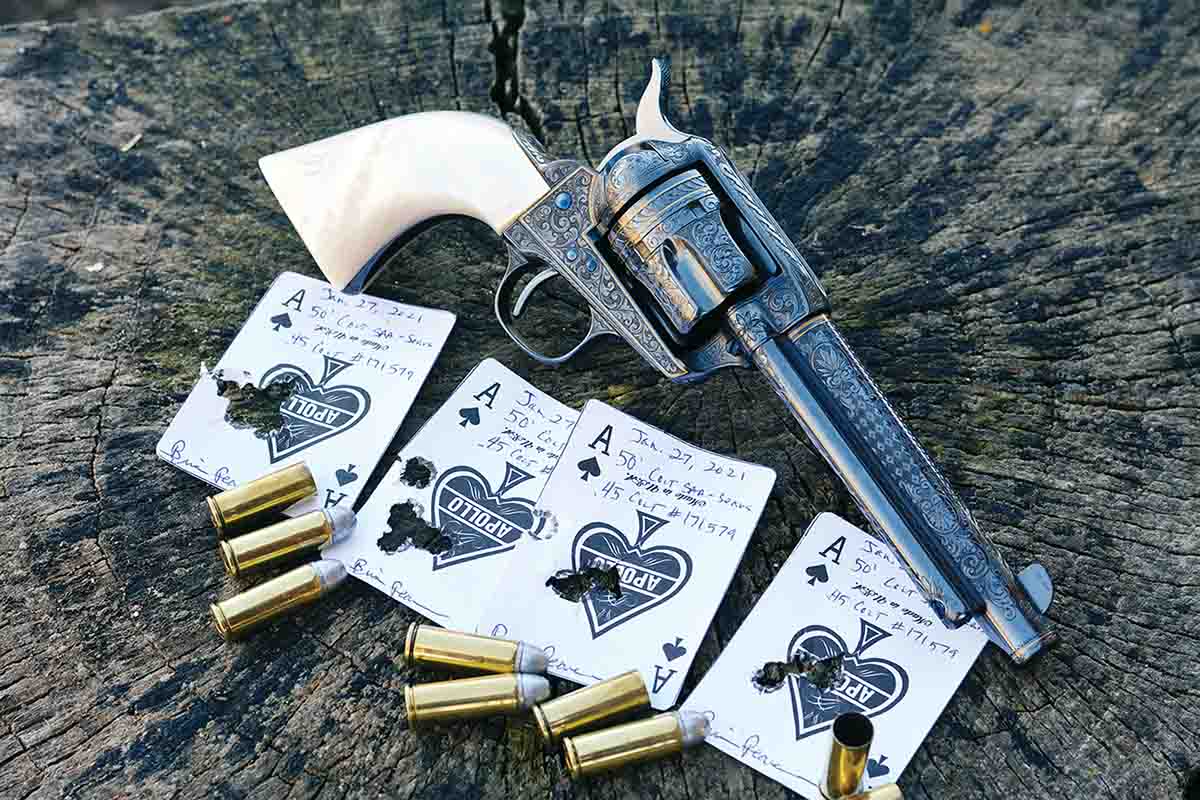
Before testing for accuracy, the barrel was broken in. Next, I turned the barrel slightly to bring the point of impact perfectly to center. Groups were soon clustering between one to 2 inches with most factory loads and my handloads. The best 25-yard group measured under .85 inch and consisted of my cast bullets from RCBS mould 45-250-FN (265 grains) pushed with 7.1 grains of Accurate No. 2 powder (844 fps).
While my Sears COWBOY SPECIAL boasts of extraordinary workmanship, it’s a real shooter and with modern steels that can be used with smokeless powders. Spring is just around the corner and I can’t wait to ride Idaho’s high country with this “new” 124-year-old sixgun at my side, which will serve as a reminder of a golden era.



.jpg)